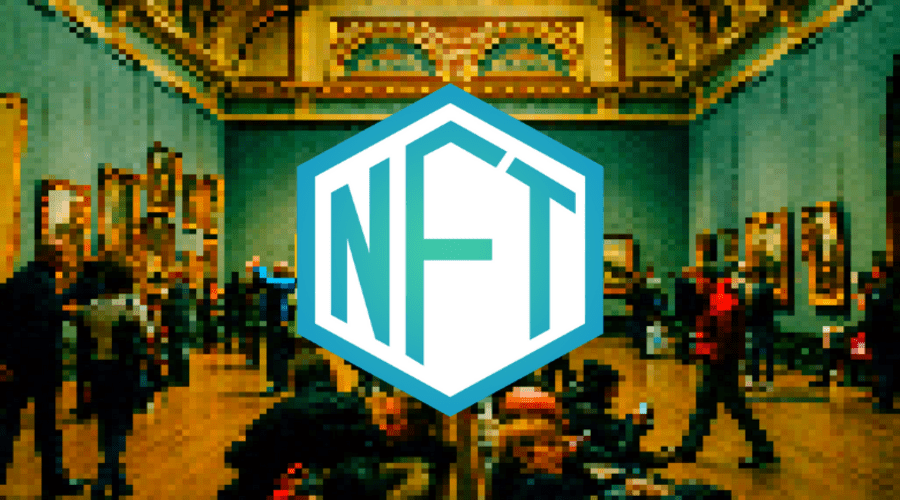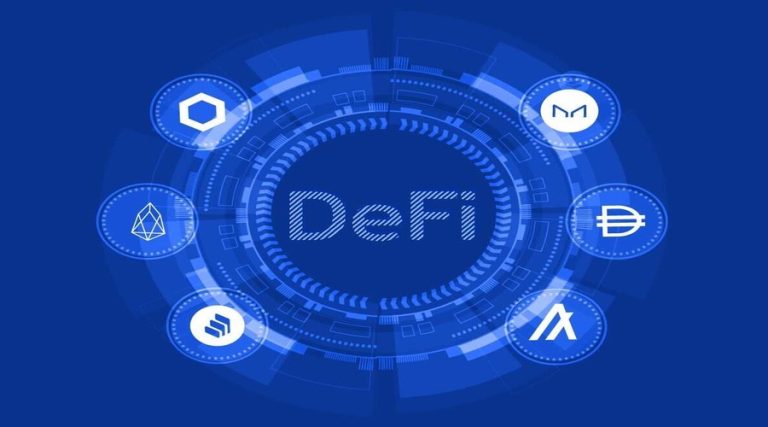
In recent years, Non-Fungible Tokens (NFTs) have gained significant attention and popularity in various industries. From art to music, NFTs have revolutionized the way digital assets are bought, sold, and experienced. Science museums, known for their valuable collections and educational exhibits, are also embracing this innovative technology to offer immersive experiences to their visitors. In this article, we will explore the intersection of NFTs and science museums, and how digitizing collections can enhance the exploration of scientific wonders.
Introduction
Science museums have always been at the forefront of showcasing the wonders of the natural world and scientific achievements. Traditional exhibits have allowed visitors to witness these marvels in person, but advancements in technology now enable a more immersive and interactive experience. NFTs, as a digital medium, provide science museums with new opportunities to engage visitors and preserve their collections in innovative ways.
Understanding Non-Fungible Tokens (NFTs)
Non-Fungible Tokens are unique digital assets that are stored on a blockchain. Unlike cryptocurrencies such as Bitcoin or Ethereum, which are fungible and can be exchanged on a like-for-like basis, NFTs represent distinct items, each with its own value and characteristics. These tokens can be used to represent ownership of digital or physical assets, including artwork, music, videos, and even physical artifacts found in science museums. Non-Fungible Tokens (NFTs) are unique digital assets stored on a blockchain. Unlike cryptocurrencies like Bitcoin, which are interchangeable, NFTs represent distinct items with their own value and characteristics. They can represent ownership of digital or physical objects, such as artwork, music, videos, or even rare artifacts found in science museums. NFTs provide proof of authenticity and ownership through the decentralized nature of blockchain technology. Their uniqueness and scarcity make them highly sought after by collectors and enthusiasts. NFTs have revolutionized the way we buy, sell, and experience digital assets, opening up new possibilities for creativity, ownership, and monetization in the digital realm.
The Benefits of NFTs in Science Museums
Preservation and Accessibility
One of the key advantages of digitizing collections through NFTs is the preservation of valuable artifacts. Physical objects are prone to deterioration over time, but by creating digital representations of these items, science museums can ensure their longevity and accessibility to a wider audience. NFTs enable virtual preservation, allowing people to explore and study artifacts that may be too delicate or rare to be displayed physically.
Engaging Experiences
NFTs offer science museums the opportunity to create immersive and engaging experiences for visitors. Through the use of virtual reality (VR) or augmented reality (AR) technologies, visitors can interact with NFT-based exhibits, exploring scientific concepts in a more interactive and memorable way. This technology opens up endless possibilities for showcasing complex phenomena, such as exploring distant galaxies or walking among dinosaurs.
Monetization Opportunities
By tokenizing their collections, science museums can explore new revenue streams. NFTs can be sold to collectors, enthusiasts, or patrons, providing a unique way to support the museum’s mission. Additionally, museums can offer limited edition NFTs or digital merchandise associated with their exhibits, creating a sense of exclusivity and value for visitors.
Case Studies: NFTs in Science Museums
Virtual Exhibitions
Several science museums have already embraced NFTs to create virtual exhibitions. These exhibitions allow visitors to explore digital replicas of their collections, offering an immersive experience from the comfort of their homes. Virtual exhibitions can attract a global audience, transcending geographical boundaries and enabling people from all over the world to appreciate scientific artifacts.
Interactive Learning
NFTs can be used to enhance educational experiences within science museums. Through interactive NFTs, visitors can engage in hands-on learning activities, conducting virtual experiments or simulations that deepen their understanding of scientific concepts. This dynamic approach to education fosters curiosity and encourages active participation.
Collectible Memorabilia
Science museums can leverage the collectible nature of NFTs to offer unique memorabilia to their visitors. For example, a museum showcasing space exploration can create limited edition NFTs that represent fragments of meteorites or digital artwork inspired by cosmic phenomena. Collectors can own a piece of scientific history while supporting the museum’s initiatives.

Overcoming Challenges
While NFTs present exciting opportunities for science museums, there are challenges that need to be addressed for successful implementation.
Security and Authenticity
Ensuring the security and authenticity of NFTs is crucial. Science museums must implement robust blockchain technologies and verification processes to guarantee the legitimacy of their digital assets. This ensures that visitors can trust the provenance and origin of the NFTs they acquire.
Technological Infrastructure
Implementing NFTs requires a solid technological infrastructure. Museums need to invest in suitable platforms and partnerships to manage and distribute their digital collections effectively. Collaboration with blockchain experts and digital art platforms can streamline the integration of NFTs into the museum’s operations.
Balancing Digital and Physical Experiences
While embracing digital experiences, science museums must strike a balance between the virtual and physical realms. The integration of NFTs should complement and enhance the physical exhibits, creating a cohesive and seamless experience for visitors. The aim is to provide an added layer of exploration and discovery, without overshadowing the tangible artifacts.
The Future of NFTs in Science Museums
The future of NFTs in science museums is promising. As technology continues to advance, we can expect even more immersive and interactive experiences. NFTs have the potential to transform the way we engage with scientific knowledge, fostering curiosity and inspiring future generations of scientists and enthusiasts.
- Expanded Virtual Reality (VR) Experiences: With advancements in VR technology, science museums can create fully immersive virtual environments where visitors can interact with NFT-based exhibits, allowing them to explore scientific wonders in unprecedented ways.
- Integration of Artificial Intelligence (AI): NFTs can be combined with AI algorithms to provide personalized and adaptive learning experiences. AI-powered NFTs can analyze user preferences and deliver tailored content, making science education more engaging and effective.
- Collaborative NFT Projects: Science museums can collaborate with artists, scientists, and technologists to create unique NFT projects that merge art, science, and technology. These collaborations can result in groundbreaking digital artworks, interactive installations, and educational experiences.
- Augmented Reality (AR) Enhancements: AR technology can overlay digital information onto physical exhibits, creating interactive and informative experiences for visitors. NFTs can play a crucial role in augmenting physical displays, providing additional layers of information and interactivity.
- Gamification of Science Education: NFTs can be gamified to encourage learning and exploration. Science museums can develop educational games and activities where players can collect NFTs representing scientific concepts, artifacts, or achievements, fostering a sense of achievement and curiosity.
- Global Collaboration and Access: NFTs enable science museums to collaborate globally, sharing digital assets and knowledge across borders. Visitors from around the world can access virtual exhibitions, lectures, and workshops, fostering a sense of global scientific community.
- Enhanced Interactivity and Interdisciplinary Connections: NFTs can facilitate interdisciplinary connections, allowing science museums to collaborate with other institutions such as art galleries, universities, and research centers. This integration of diverse perspectives can lead to innovative exhibits and research projects.
- Sustainable Preservation: NFTs provide a sustainable way to preserve scientific knowledge and artifacts. By digitizing collections, science museums can reduce the need for physical storage space and minimize the risks of deterioration, ensuring long-term preservation.
- Tokenized Science Experiences: Science museums can tokenize unique experiences such as behind-the-scenes tours, meet-and-greets with scientists, or interactive workshops. Visitors can acquire these NFT-based experiences, creating a sense of exclusivity and supporting the museum’s initiatives.
- Evolution of NFT Standards: As NFT technology evolves, new standards and protocols will emerge, enhancing the functionality and interoperability of NFTs. Science museums can adapt to these advancements, incorporating new features and possibilities into their digital collections.
The future of NFTs in science museums is incredibly promising, offering limitless opportunities for engagement, education, and exploration. By embracing this digital revolution, science museums can captivate audiences and inspire a deep appreciation for scientific knowledge and discoveries.
Conclusion
NFTs have opened up new possibilities for science museums, allowing them to digitize their collections and provide immersive experiences to visitors. Through the preservation and accessibility of artifacts, engaging experiences, and monetization opportunities, NFTs have the potential to revolutionize the museum-going experience. As science museums embrace this technology, they can captivate audiences and inspire a deeper appreciation for the wonders of the scientific world.
FAQs (Frequently Asked Questions)
- Can anyone buy NFTs from science museums?
- Yes, NFTs from science museums are typically available for purchase by anyone interested in owning a piece of digital history.
- Are NFTs limited to artwork or can they represent other scientific objects?
- NFTs can represent a wide range of objects, including scientific artifacts, fossils, specimens, and even interactive simulations.
- Can I access virtual exhibitions without owning NFTs?
- Yes, virtual exhibitions created using NFTs can often be accessed without owning the NFTs themselves. The NFTs may offer additional benefits or exclusive content.
- How can science museums ensure the security of their NFTs?
- Science museums employ blockchain technology and robust verification processes to ensure the security and authenticity of their NFTs.
- Can NFTs replace physical exhibits in science museums?
- NFTs are not meant to replace physical exhibits but rather complement them. They provide additional avenues for exploration and engagement, enhancing the overall museum experience.
I have been writing about cryptocurrencies for over two years and I’m widely considered one of the most knowledgeable and respected authors in the space. I have a deep understanding of the underlying technology and market dynamics, and my insights have helped countless investors make informed decisions about their portfolios. I’m a speaker and commentator, and my work has been featured in major publications such as CoinDesk, Forbes, and The Wall Street Journal. I also run a popular cryptocurrency trading signals service that has helped thousands of people make money in the volatile but potentially lucrative world of digital assets.


